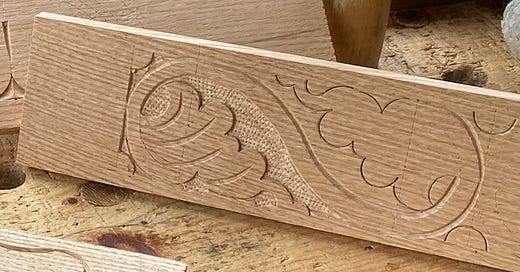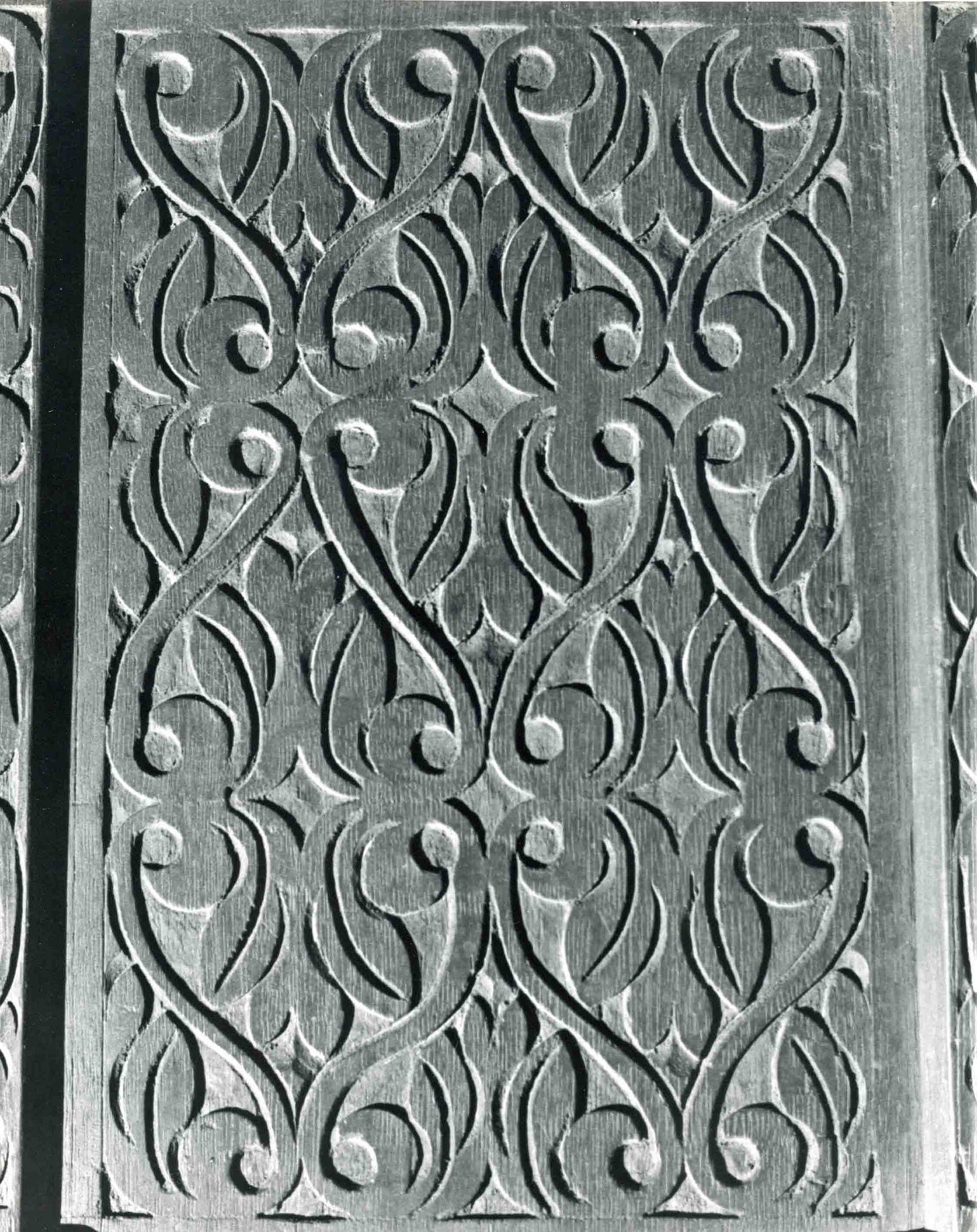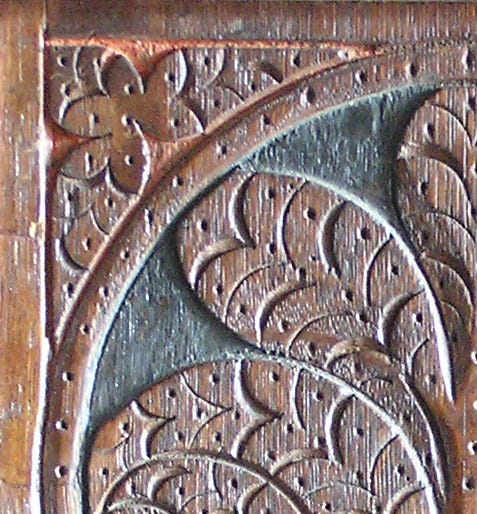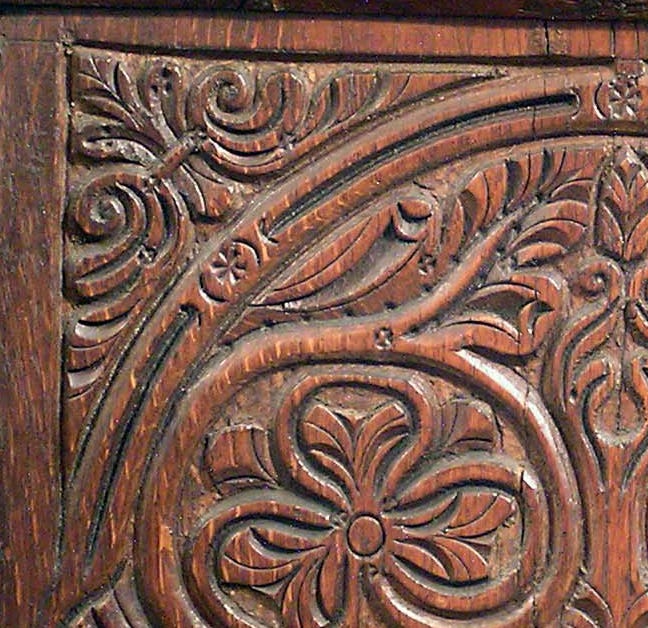It’s been 2 years since I taught a class in 17th-century style carving. I dug out my box of sample carvings - that pile gets smaller over time. I don’t know where they all go, but a few went into my dressing box as drawer parts - there’s times when I have a greater need for a short section of oak than I do for a carving sample.
I started a few more the other day so the students will have references at (or near) their bench as they learn the patterns. The class combines some simple geometry and some hand-drawn shapes. Both can freak students out - but there’s no need. This style of carving, with one or two exceptions, is very forgiving. Some of the game is learning to see what elements combine to create the patterns. Our class is 4 days - we’ll go through the first couple of days where the whole class will carve the same patterns, but by day four I expect they’ll each be tackling something more complex - this student on one design, the next on another.
One we’ll all do is the S-scroll I learned from New Haven furniture. Its outline can be completely drawn with a compass. The geometry-inclined students like this one - no freehand stuff for the outline. But you have to keep track of this radius and that radius. When you do get to the freehand elements of this pattern, the space is so limited that you can’t go too far astray.
The opposite is the Ipswich/Devon S-scrolls - the only outline is a rectangle scribed into the oak. Then the curves of the gouges and some freehand V-tool work define the pattern. Look at this panel below, composed of 12 versions of a single S-scroll. (4 across and 3 vertically) - study the lines that outline the “S” and note the variety of their curves. But they all fall within the spacing and you can get away with it. Our brains like patterns and repeats and can tolerate some variation within the pattern.
A lot of what I teach comes from this Ipswich/Devon material - the Thomas Dennis works and the related work from Devon, England I’ve begun writing about in some recent posts here. Part of why I draw on this body of carving so much is the seemingly endless variety. A panel like the one below is a different matter from the S-scroll panel we just saw. Here, you have to break it down to its various components - what I like to call the “vocabulary” of elements. The urn at the bottom middle is present in most of this group and various leaf/flower shapes. Many (most?) panels have an arch across the top, then outside this arch various versions of what is architecturally called a spandrel.
I began a panel that I’ll finish in front of the students - combining parts of two related panels. The reverse-curved vine stemming up from the urn, with a flower in the lower curve and what looks to me like a spade from a deck of cards in the upper. But I added the arch from another panel and borrowed the bottom corners from that one as well.
I have at times filled pages of notebooks with different parts of carvings. Here’s two different ways to fill in that space inside the bottom curving vine - 3 flowers on the version on the left and a single, more deeply-formed flower on the right.
At the top end of the panels, there’s different ways to fill out the spandrel shape. Two I use a lot are based on these originals:
and from Devon - a much more involved pattern. This arch is broader than the previous, leaving more space to fill outside it.









